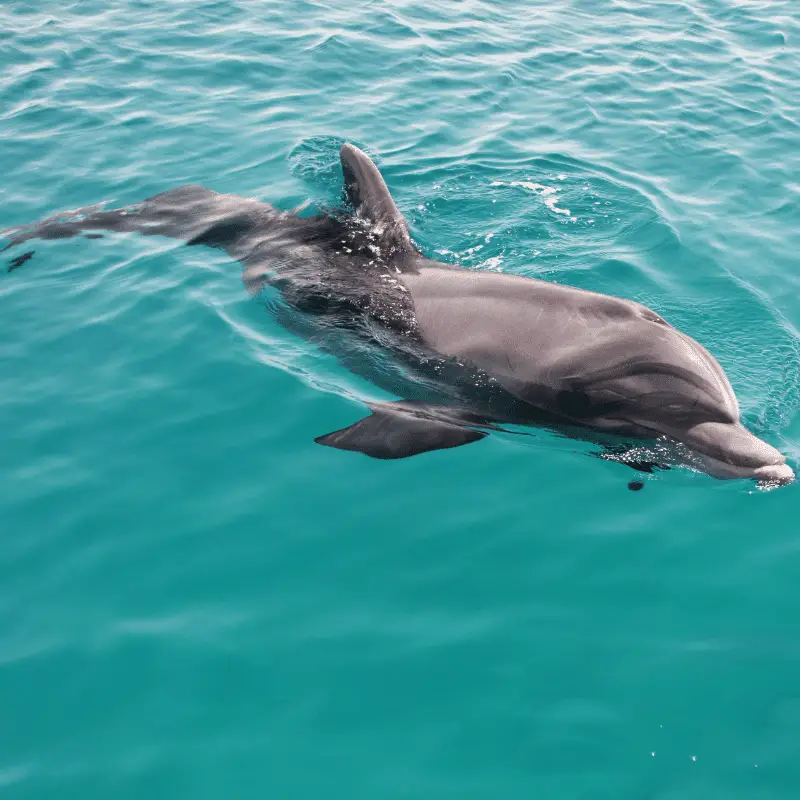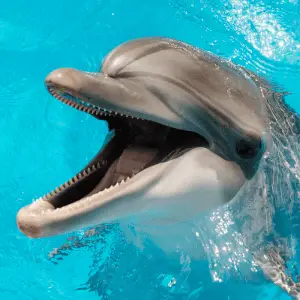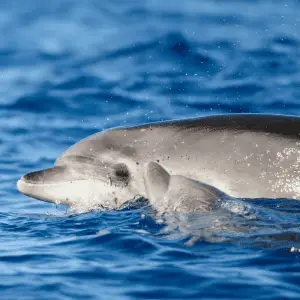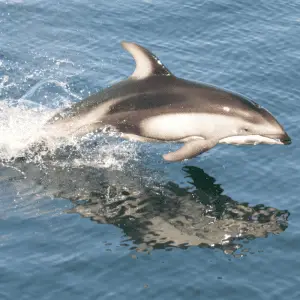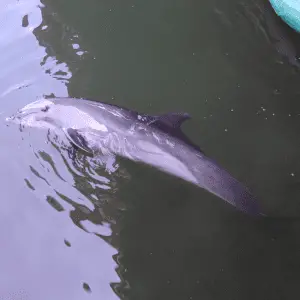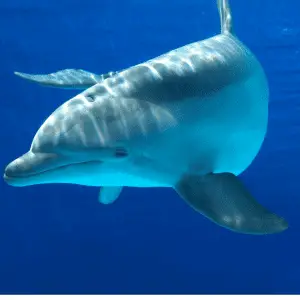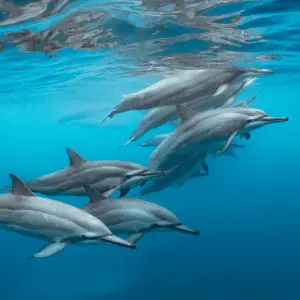Yes, dolphins do pee. Dolphins are mammals, so their bladder and bowel systems are similar to other mammals.
Dolphins urinate and defecate through their excretory systems, Let’s learn a bit more about how this works!
Excretory System
Unlike all other mammals, dolphins do not possess any sweat glands in their skin. Like birds, dolphins also do not have specialised glands that can help them excrete salt. So, they complete the process of salt excretion through their kidneys. That is one of the reasons why the dolphins have evolved in a unique way to develop a specialised kidney that can handle processing such a large volume of electrolytes and water.
Dolphins have two large kidneys that contain numerous closely packed interconnected lobes known as renculi. This particular structure helps the dolphins process the vast volume of water and salt excreted through urination. It is, most probably, a part of the unique adaptation that the dolphins have acquired over the centuries to adjust to their marine life.
Despite living in the sea, the dolphins need to drink fresh water to survive. The problem is seawater is saline and is not suitable for consumption. The dolphins source most of the freshwater requirement from consuming fish. Apart from that, dolphins drink salt water to maintain the thickness of their blood. However, they need to eliminate the extra salt they consume and the ocean water. The kidneys of the dolphins help in this regard. Even though the dolphin kidney is not very suitable for desalinating water, they can still process the excess salt and help to remove it from their body.
But the kidneys still cannot fulfil the requirement of freshwater for these marine animals. However, the unique method of the dolphin’s kidney may help these animals in the filtration process while they dive deep undersea. The dolphin skin acts as an osmotic membrane that allows only the water and salt particles to enter their system. Instead of the kidneys, the dolphins’ skin does most of this job through osmosis.
Do dolphins poop?
Yes, dolphins do release faeces regularly. The amount of food that the dolphins consume depends mainly on their species. However, most dolphins consume food weighing about 2 % to 10% of their body weight.
Diet
As the dolphins consume squid, fish, octopus, shrimp, krill, and other marine life as their food resource, they need to break these elements down to separate the nutrients from the waste.
Nutrients
The dolphins absorb all the necessary nutrients through the small intestine and excrete all the toxic substances from their body during the digestion process. This process allows the dolphins to grow faster in a healthy way.
What does dolphin poo look like?
All the non-nutrient food ingredients go through the anal tract of these animals to get released as faecal matter. When the dolphin releases its faecal matter, it comes out almost liquid. The faecal matter comes out in a plume-like cloud.
The faecal matter of the dolphin is very light, and that’s why you can see it floating across the top of the seawater near the surface.
Poo Helps The Ecosystem
Dolphin excrement plays a vital role in the ecosystem of the ocean. It contains a large amount of energy, and it helps in the healthy growth of various smaller organisms like phytoplankton. Many fishes and other marine organisms survive by consuming the phytoplanktons and other elements that consume dolphin faeces.
What colour is dolphin pee?
The urine of the dolphins is primarily clear, pale to dark yellow and comes with a strong fishy smell. The pH level of dolphin urine is quite acidic.
Why do dolphins have three stomachs?
Dolphins have three stomachs. They can’t chew their food, so they have to swallow it whole. The unique structure of their teeth only lets them eat the food whole. That means they need a stomach with three different compartments to digest all the food they eat correctly! See below the compartment roles they play in the digesting process.
1st compartment
They used the first compartment of their stomach as a storage unit. Not only that, but this compartment also acts as a grinding unit and is where the consumed food gets grounded into smaller pieces.
2nd compartment
In the second compartment, the primary digestion takes place. This compartment secretes many digestive juices, which helps break down the consumed food.
3rd compartment
The digestion process and absorption of nutrients are completed in this compartment of the dolphin’s stomach. After that, the excretory element gets pushed down to the anal tract.
What Do Dolphins Eat?
The dolphins are active predators, and they consume a wide range of squids, fishes, marine plants, and crustaceans like shrimp. The dolphins’ diet can vary depending on their geographical location and the time of the year.
While the dolphins are carnivores, their food habits mainly depend on the dolphin species. Some species also consume marine plants.
For example, the dolphins living off the coast of Scotland generally feed on Salmon fish during spring and summer. But during the winter months, when the Salmon becomes scarce, they start hunting fishes like Cod.
How much does a dolphin eat per day?
Dolphins consumes approximately 2% to 10% of their body weight in food every day. The amount of food and nursing mothers consume is significantly higher as well. Dolphins also have three compartmentalised stomachs that help these animals to digest their food.
How much does a dolphin weigh?
Dolphins can weigh up to 650 kilos. The smallest type of dolphin is the Chilean one which weighs 45 kilos. The heaviest variety of dolphins is the common bottlenose, weighing between 150 and 650 kilos.

